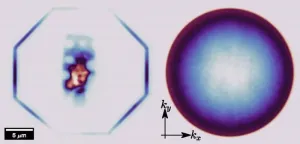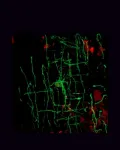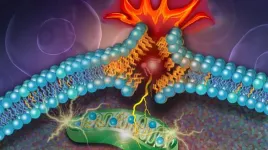(Press-News.org)
For Immediate Release
Contact: Erik Molvar, Western Watersheds Project, 307-399-7910
Roger Rosentreter, Bureau of Land Management, Botanist (Retired), 208-991-8815
Don Mansfield, Emeritus Professor of Biology, College of Idaho, 208-871-8170
Scientific Report Reveals Livestock Grazing as the Key Factor in Cheatgrass Spread
HAILEY, Ida. (February 15, 2024) – A scientific report released today illuminates the causes of cheatgrass spread and compares the effectiveness of various methods to restore invaded plant communities. The report reviews over 500 studies spanning a century of scientific research. Cheatgrass is a widespread invasive weed occupying millions of acres in the Intermountain West, and its invasions fuel large-scale fires that degrade wildlife habitats and wipe out sagebrush communities key to the survival of sage grouse and dozens of other native wildlife species.
“There is a massive and comprehensive body of scientific findings specific to cheatgrass invasions, showing that disturbance from commercial activities, most notably overgrazing by domestic livestock, is the key factor in causing the spread of this invasive and flammable weed,” said Erik Molvar of Western Watersheds Project. “Conversely, in areas where land managers have maintained healthy natural ecosystems, cheatgrass is a negligible component of the plant community and is unable to establish dominance, even after fires.”
Key findings of the report include:
Cheatgrass requires disturbance of native plant communities to gain a foothold.
Disturbance from heavy grazing by domestic livestock is an ‘ecological switch’ that is the key trigger of widespread cheatgrass invasions.
Industrial disturbance from road construction, oil and gas development, mining, and fuelbreak construction can also cause localized cheatgrass irruptions.
Once soils and vegetation are disturbed cheatgrass seedlings outcompete the seedlings of native grasses for soil nutrients and water.
Because cheatgrass is an annual that dies in early summer providing highly combustible fuel, cheatgrass infestations fuel unnaturally large range fires.
Fire itself is not a direct cause of cheatgrass spread, and fires that occur in healthy natural ecosystems result in native bunchgrass communities post-fire, not cheatgrass monocultures.
Healthy perennial bunchgrasses and undisturbed biological soil crusts provide a natural defense against cheatgrass invasions.
The report documents that cheatgrass continues to expand over recent decades facilitated by land management that prescribes unsustainably heavy levels of domestic livestock grazing.
“The science on cheatgrass is similar to many other weeds,” said Roger Rosentreter, retired state botanist for the Bureau of Land Management. “The more soil disturbance, the more weeds.”
Drought and fires are expected to increase in frequency and extent as a result of the changing climate. Drought can exacerbate the effects of heavy livestock grazing in suppressing or eliminating native perennial bunchgrasses, allowing cheatgrass to expand rapidly during the next wet cycle. When cheatgrass increases in the understory of shrubsteppe ecosystems, it can fuel major fires. But fire itself is not the cause of cheatgrass spread, and measures designed to control the spread of fire can cause disturbance that actually facilitates cheatgrass invasion, according to studies cited in the report.
“Blaming fire for our cheatgrass problems is a red herring,” said Don Mansfield, Emeritus Professor at the College of Idaho. “Building fire breaks is a wonderful way to develop corridors for spread of weeds. Cheatgrass will be eternally grateful to us for that.”
The report also explains the difficulty of eliminating cheatgrass once it has become established. Some methods, like herbicides and biological agents, have shown limited promise at small scales but have been ineffective when scaled up to the hundreds of thousands of acres of a major cheatgrass infestation. Other methods, like mechanical treatments, burning, or targeted livestock grazing, risk exacerbating cheatgrass infestations. The authors recommend sequential removal of livestock from large areas until native bunchgrasses are adequately re-established, as perhaps the most promising method of re-establishing native vegetation in the wake of major cheatgrass outbreaks.
“The intention of this report is to bring the vast array of scientific findings on cheatgrass causes, consequences, and solution into one place as a useful and comprehensive reference guide for land managers, conservationists, and user groups,” said Molvar. “In an age of passing fads and short attention spans, it is critically important to take stock of all that scientists have learned about cheatgrass over the decades in order to prevent further cheatgrass spread and maximize our effectiveness at restoring infested areas back to healthy natural ecosystems.”
###
END
WASHINGTON – The U.S. Naval Research Laboratory (NRL), in collaboration with Kansas State University, announce the discovery of slab waveguides based on the two-dimensional material hexagonal boron nitride. This milestone has been reported in the journal Advanced Materials.
Two-dimensional (2D) materials are a class of materials which can be reduced to the monolayer limit by mechanically peeling the layers apart. The weak interlayer attractions, or van der Waals attraction, allows the layers to be separated via the so-called ...
The American Institute of Biological Sciences (AIBS) is pleased to announce that Alex Rich and Efraín Rodríguez-Ocasio have been selected to receive the 2024 AIBS Emerging Public Policy Leadership Award (EPPLA). The award recognizes graduate students in the biological sciences who have demonstrated leadership skills and an aptitude for working at the intersection of science and public policy.
Alex Rich is a Ph.D. student in neuroscience at Yale University in New Haven, Connecticut. Her research focuses on decision-making and disordered ...
By integrating an ensemble of privacy-preserving algorithms, a KAUST research team has developed a machine-learning approach that addresses a significant challenge in medical research: How to use the power of artificial intelligence (AI) to accelerate discovery from genomic data while protecting the privacy of individuals.[1]
“Omics data usually contains a lot of private information, such as gene expression and cell composition, which could often be related to a person’s disease or health status,” says KAUST’s Xin Gao. “AI models trained on this data – particularly deep learning models – have the potential to retain private ...
You’d think the complex flavor in a quality cup of tea would depend mainly on the tea varieties used to make it. But a study appearing in the journal Current Biology on February 15 shows that the making of a delicious cup of tea depends on another key ingredient: the collection of microbes found on tea roots. By altering that assemblage, the authors showed that they could make good-quality tea even better.
“Significant disparities in microbial communities, particularly nitrogen metabolism-related microorganisms, were identified in the roots of tea plants with varying qualities through ...
Cell Press, Cell Signaling Technology (CST), and the Elsevier Foundation are proud to announce the winners of the 4th annual Rising Black Scientists Awards: Jaye Wilson of Yale University, Kevin Brown Jr. of California State University San Marcos, Senegal Mabry of Cornell University, and Akorfa Dagadu of the Massachusetts Institute of Technology.
This year had the greatest number of submissions thus far, with the winners being selected from a pool of more than 350 applicants from across the life, health, physical, earth, environmental, and data sciences. Essays from the winners and honorees appear in the journals Cell and ...
Researchers report February 15 in the journal Cell that ancient viruses may be to thank for myelin—and, by extension, our large, complex brains. The team found that a retrovirus-derived genetic element or “retrotransposon” is essential for myelin production in mammals, amphibians, and fish. The gene sequence, which they dubbed “RetroMyelin,” is likely a result of ancient viral infection, and comparisons of RetroMyelin in mammals, amphibians, and fish suggest that retroviral infection and genome-invasion ...
Columbia researchers have found that a rare type of lipid is a key driver of ferroptosis, a form of cell death discovered by Columbia professor Brent Stockwell.
The findings provide new detail on how cells die during ferroptosis and could improve understanding of how to stop ferroptosis in contexts where it is harmfully occurring– in neurodegenerative diseases, for example– or induce it in contexts where it could be useful, such as using it to kill dangerous cancer cells.
The new research found that a rare type of ...
The first accurate maps of outbreaks of potato blight — a disease caused by the fungus-like pathogen Phytophthora infestans that was responsible for the Irish potato famine between 1845 and 1852 — in the USA between 1843 and 1845 are presented in a study published in Scientific Reports. The findings improve our understanding of the spread of potato blight before the disease reached Europe.
Jean Ristaino and colleagues mapped outbreaks of potato blight in North America between 1843 and 1845 by analysing historic agricultural reports published in the USA during this period. The authors found that the disease was first reported ...
An innovative treatment significantly increases the survival of people with malignant mesothelioma, a rare but rapidly fatal type of cancer with few effective treatment options, according to results from a clinical trial led by Queen Mary University of London.
The phase 3 clinical trial, led by Professor Peter Szlosarek at Queen Mary and sponsored by Polaris Pharmaceuticals, has unveiled a breakthrough in the treatment of malignant pleural mesothelioma (MPM), a rare and often rapidly fatal form ...
About The Study: In this study of primary-care patients with obesity, all weight management treatments (nutrition counseling, very low-calorie meal replacement, anti-obesity medications, and bariatric surgery) increased the patient-level probability of achieving 5% or greater weight loss, but current rates of utilization are low and insufficient to reduce weight at the population level.
Authors: Dina H. Griauzde, M.D., M.Sc., of the University of Michigan in Ann Arbor, is the corresponding author.
To access the embargoed study: Visit our For The Media website at this link https://media.jamanetwork.com/
(doi:10.1001/jamanetworkopen.2023.56183)
Editor’s ...





